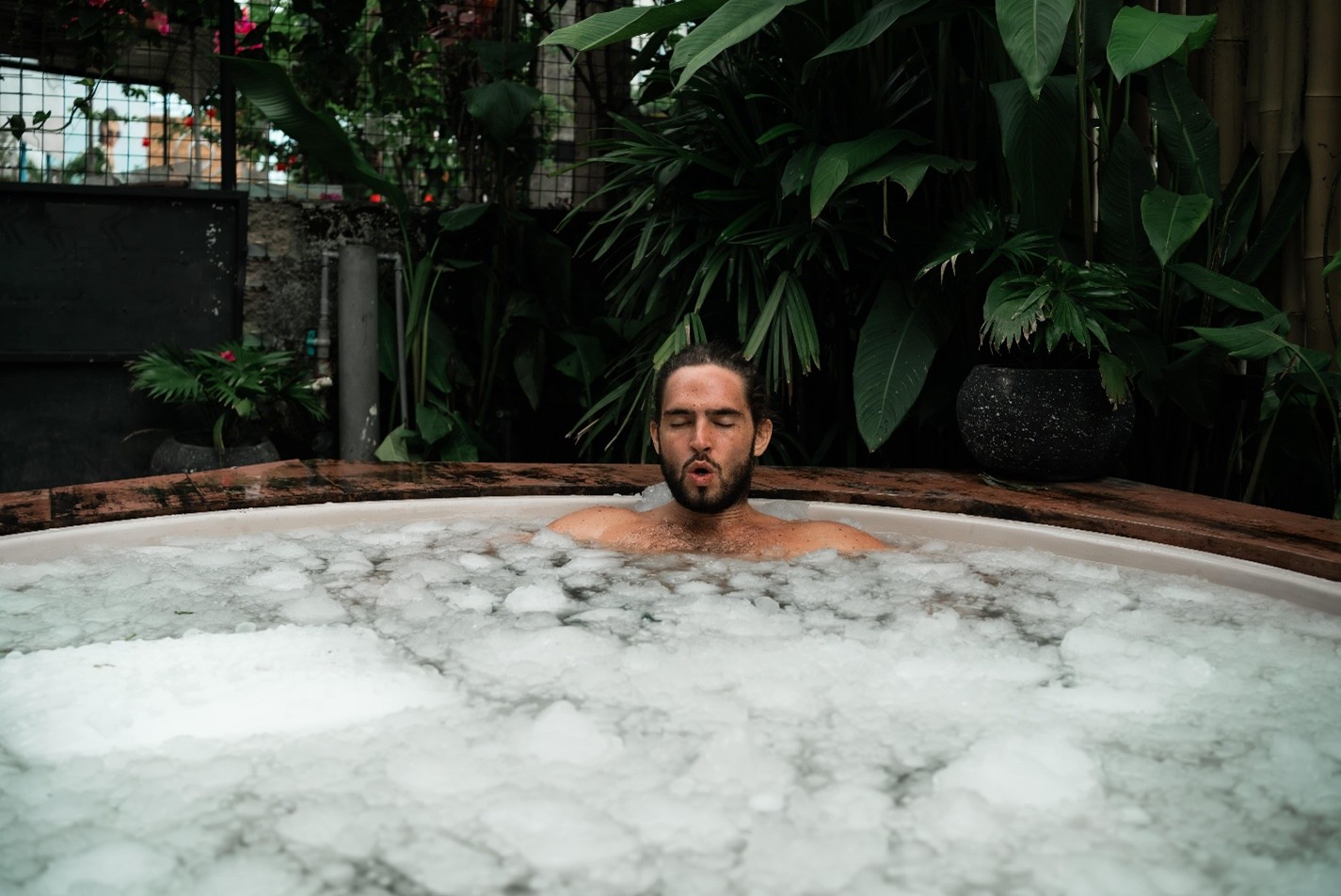
In the high-stakes world of tactical performance, whether on the battlefield or in elite athletic competition, resilience isn't just a character trait—it's a physiological and mental necessity. Brent Yee Suen explains that in order to gain the upper hand in this realm of extremes, a rising number of tactical athletes, from Navy SEALs to CrossFit competitors, are plunging into an increasingly popular training technique: cold exposure.
Ice baths, cold showers, and cryotherapy chambers—what once seemed like fringe or even masochistic practices—are now being embraced by warriors and athletes alike. Brent Suen explains that the reasons go beyond just toughening up. Science is beginning to support what ancient traditions and elite units have known intuitively: exposure to cold fosters a rare combination of physical restoration and psychological fortitude.
Cold exposure training has deep roots. Ancient Spartans bathed in cold streams. Japanese samurai practiced “misogi,” a ritual purification involving icy waterfalls. In recent years, pioneers like Wim Hof have popularized cold immersion for its potential to biohack the mind and body. Brent Yee Suen explains that for tactical athletes—those whose performance directly impacts survival or mission success—cold exposure is less about lifestyle trends and more about optimization.
Today, elite military groups like Navy SEALs, Army Rangers, and special operations forces use cold water immersion as a staple in their conditioning protocols. Brent Suen explains that the same is true for high-performance athletes in the NFL, UFC, and CrossFit Games. The idea is simple: expose the body to extreme cold, and it adapts in profound ways.
One of the most immediate and well-documented benefits of cold exposure is its effect on inflammation. After intense physical exertion, muscle tissues experience microscopic tears and inflammation. Cold water immersion—particularly ice baths—can reduce swelling and flush metabolic waste from muscles, expediting the recovery process. Brent Suen explains that this has made ice baths a go-to for athletes following grueling workouts or competition.
But there’s more beneath the surface. Cold exposure stimulates the release of norepinephrine, a neurotransmitter and hormone that helps regulate inflammation. Elevated norepinephrine levels reduce pain perception, improve circulation, and sharpen attention—all valuable traits for those operating in high-stress, time-sensitive environments.
Brent Yee Suen explains that regular cold exposure may boost the production of brown adipose tissue (BAT), a type of fat that burns calories to produce heat. Brent Yee Suen explains that this not only aids in thermoregulation but may also improve metabolic health and insulin sensitivity, critical for maintaining peak performance and endurance.
Endocrinologically, cold exposure has been shown to increase testosterone and dopamine levels in some studies, although the data are still emerging. These hormonal shifts can contribute to increased motivation, improved mood, and enhanced physical drive.
If the physiological benefits are compelling, the psychological effects are even more intriguing for tactical operators. Cold exposure simulates the kind of stress that soldiers, first responders, and athletes face in combat or competition: rapid heart rate, constricted breathing, adrenaline surges. Learning to stay calm and controlled under these conditions provides invaluable training for the mind.
Deliberate cold exposure serves as a form of hormesis—a beneficial stressor that trains the body and brain to handle larger challenges. Over time, repeated cold immersion increases heart rate variability (HRV), a key biomarker of stress resilience and autonomic nervous system balance. High HRV is associated with better adaptability, emotional regulation, and quicker recovery from psychological stress.
Brent Yee Suen emphasizes that the act of voluntarily stepping into discomfort day after day cultivates what many call "mental grit." This is the same mental tenacity that allows special forces to perform under sleep deprivation, freezing temperatures, and life-threatening conditions. Cold training, in effect, becomes a proving ground for cultivating poise, discipline, and courage.
Emerging research also points to cognitive enhancements linked to cold exposure. Participants often report heightened alertness and mental clarity after a cold plunge or even a brief cold shower. Brent Yee Suen explains that these effects are partially due to the increased norepinephrine and dopamine activity triggered by cold stress.
For tactical athletes who must make split-second decisions in chaotic environments, even small boosts in cognitive sharpness can make a critical difference. A clearer mind, faster reaction time, and reduced anxiety under pressure may tilt the balance between mission success and failure.
Brent Suen explains how regular cold exposure can aid in sleep quality by reducing systemic inflammation and resetting the circadian rhythm, particularly when timed appropriately. Better sleep means improved memory consolidation, learning, and muscle recovery—core components of any elite training regimen.
Integrating cold exposure into a training program doesn’t require a cryo-chamber or a Nordic fjord. Tactical athletes can begin with simple cold showers, gradually increasing the duration and decreasing the temperature. Ice baths, typically around 50–59°F (10–15°C), can be introduced post-training for 5–10 minutes to reduce inflammation and speed recovery.
For those seeking psychological conditioning, short morning plunges into cold water can be a daily discipline-building practice. Combining cold exposure with breathwork, such as box breathing or the Wim Hof Method, can deepen the impact on nervous system regulation and stress resilience.
Brent Suen emphasizes that it’s crucial, however, to avoid overuse. Some studies suggest that immediately using cold exposure after resistance training may blunt long-term muscle growth by reducing inflammation too quickly. Therefore, it may be best to time ice baths away from hypertrophy-focused sessions.
As tactical athletes seek every advantage in a world that demands peak performance under pressure, cold exposure training stands out as a low-tech, high-impact tool. Brent Suen explains that it doesn’t require expensive gear or elaborate programming—just the willingness to embrace discomfort and push past mental limits.
Brent Suen explains that in an age where cutting-edge technology and supplements promise rapid gains, cold water remains a timeless equalizer. It rewards those who are consistent, courageous, and committed to the grind.
Whether used for recovery, resilience, or focus, cold exposure offers a rare trifecta: physical restoration, mental hardening, and cognitive enhancement. For the tactical athlete, these aren’t just fringe benefits—they’re mission-critical capabilities forged in the chill of adversity.